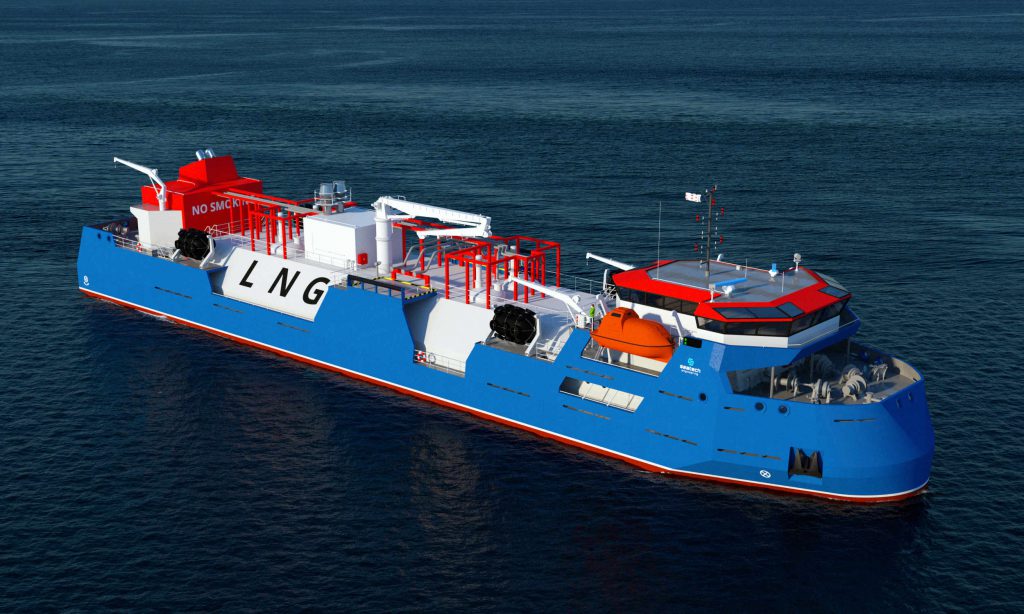The global LNG Bunkering Market is estimated to be valued at US$ 592.84 million in 2021 and is expected to exhibit a CAGR of 35.26% over the forecast period 2022-2030.
A) Market Overview:
LNG bunkering refers to the process of providing liquefied natural gas (LNG) fuel to ships for propulsion. It is a cleaner and more sustainable alternative to traditional marine fuels such as heavy fuel oil (HFO) and marine diesel oil (MDO). LNG bunkering offers several benefits, including reduced emissions, lower fuel costs, and compliance with stringent environmental regulations. The demand for LNG bunkering is increasing rapidly as ship owners and operators are looking for ways to reduce their carbon footprint and meet international emission standards.
B) Market Dynamics:
Driver: Increasing demand for clean energy
The global push towards cleaner and greener energy sources is one of the key drivers for the LNG bunkering market Growth. LNG is considered a cleaner fuel compared to traditional marine fuels, as it emits significantly lower levels of sulfur oxides (SOx), nitrogen oxides (NOx), and particulate matter. The International Maritime Organization (IMO) has implemented regulations to reduce sulfur emissions from ships, creating a need for cleaner fuels like LNG. Additionally, LNG offers a potential pathway to decarbonize the shipping industry, as it can be produced from renewable sources such as biomethane or synthetic methane.
2. Driver: Stringent environmental regulations
The implementation of stringent environmental regulations by various countries and international organizations is driving the demand for LNG bunkering. For example, the IMO’s global sulfur cap requires ships to use fuel with a sulfur content of no more than 0.50% in order to reduce air pollution from shipping. LNG bunkering helps ship owners and operators comply with these regulations, as LNG has a sulfur content of less than 0.001%. In addition, LNG bunkering also helps reduce greenhouse gas emissions, as LNG has a lower carbon content compared to traditional marine fuels.
C) SWOT Analysis:
Strength:
1. Environmental benefits: LNG bunkering offers significant environmental benefits, including lower emissions of SOx, NOx, and particulate matter, as well as reduced greenhouse gas emissions.
2. Cost advantage: LNG bunkering provides cost advantages to ship owners and operators, as LNG prices are generally lower than traditional marine fuels.
Weakness:
1. Limited infrastructure: The availability of LNG bunkering infrastructure is limited, which can pose challenges for the adoption of LNG as a marine fuel.
2. Technological challenges: The adoption of LNG bunkering requires specific on-board equipment and storage facilities, which can be expensive to install and maintain.
Opportunity:
1. Increasing LNG production: The growing LNG production capacity globally provides an opportunity for the expansion of LNG bunkering infrastructure.
2. Government support: Government initiatives and financial incentives to promote the adoption of LNG as a marine fuel can create opportunities for the LNG bunkering market.
Threats:
1. Volatility in LNG prices: Fluctuations in LNG prices can impact the economic viability of LNG bunkering.
2. Competing fuels: The emergence of alternative fuels such as hydrogen and ammonia could pose a threat to the adoption of LNG bunkering in the long term.
D) Key Takeaways:
– The global LNG bunkering market is expected to witness high growth, exhibiting a CAGR of 35.26% over the forecast period, due to increasing demand for clean energy and stringent environmental regulations.
– Europe is expected to be the fastest-growing and dominating region in the LNG bunkering market, driven by the implementation of stricter emission regulations and a favorable regulatory framework for LNG infrastructure development.
– Key players operating in the global LNG bunkering market include Royal Dutch Shell Plc., Skangas, ENN Energy, Korea Gas Corporation, Prima LNG, Harvey Gulf International Marine LLC, Bomin Linde LNG GmbH & Co KG, Fjord Line, Crowley Maritime Corporation, and Polskie LNG. These players are focusing on partnerships, acquisitions, and capacity expansions to strengthen their market presence.
In conclusion, the global LNG bunkering market is poised for significant growth driven by the increasing demand for clean energy and the need to comply with stringent environmental regulations. The market offers immense opportunities for key players, but challenges such as limited infrastructure and technological requirements need to be addressed. With government support and the expansion of LNG production capacity, the LNG bunkering market is expected to witness substantial growth in the coming years.



